Despite the fact that there were many visitors who reckoned I’d be closed through lack of sales, the business continued to gather strength and I made more and more visits to Japan in order to get more Koi stocks.
Sales more than compensated for the overheads because these were days when Koi and Koi-related items were definitely in demand.
By 1985 we were building ponds all over the UK, I had around 14 staff back then and probably 14 vehicles. Most of the Koi for sale at other major outlets were supplied by Infiltration originally.
I’ll skip a few years now and move on to winter 1991 when some of my guys often mentioned that I had no Koi pond at my own house and that started me to thinking.
I knew that if I did build a pond – it would have to be special or else I end up with jam on my face. It would also have to hold a large volume of water and the final landscaping would play a big part on completion.
It was early spring 1992 when I drew out a rough design on some scrap paper, remember by then I’d already built many Koi ponds for others and knew several ways of improving on the standards of the day.
Right from the initial design I drew four bottom drains on the pond base and decided that each drain line would be taken to its own filter system.
The thinking behind this was if I could get four separate pumps to return identical volumes of water, I could be sure that all four bottom drains would be pulling identical amounts of water.
This method became my ‘one drain to one filter to one pump’ method, later to be highlighted in my first book ‘Koi Kichi’.

However, there was much more work to be done before these technicalities could be realised.
The first job was to clear the garden; the lawn was removed, trees and plants were removed and all that was left was the large pine tree that is still here today. I reckoned that this tree could play a large part in the final landscaping.
Access around the sides of my house from the drive was limited but with great care we could get a small back-acter (digger) onto the back garden.
The digger could excavate rapidly but the waste soil had to be barrowed by hand to the endless supply of waste skips on the front drive.
Regarding the waste skips used – I had no idea at the time that these would amount to £12,500.00 after the last one was taken away. Of course that amount was only for delivery and removal of the skips – labour to load them was extra – repeat extra.
I must point out that the pond project could only be continued if we were not working on other ponds for our customers, as a result, progress was slow – at times dangerously slow.
From 1993 to 1996 we found ourselves building many large Koi ponds in Germany and my pond project was relegated to the back seat.
In 1995 ‘Koi Kichi’ was published and, as a direct spin-off from this, we found ourselves building Koi ponds in places like the USA and South Africa.
In truth, my pond at home commenced in 1992 and did not reach completion until late 1999 – seven long years.
Being someone who detests seeing a pond where one can also see water pumps, air pumps, pipes and valves etc. – all these necessary items were concealed in a sunken house behind the waterfall and the roof of the house became a garden patio.
Of course, other items such as dehumidifiers, U/V units, gas boiler, heat exchanger and insect zappers had to be housed in the same filter house.
Thankfully, although the depth of the excavation, before concrete bases had been poured, came to almost 9 feet, we never came across the ground water table, presumably because the house had been built on high ground.
However, the connection to my main sewer was much higher than the base of my pond and so a discharge box also had to be incorporated in the floor of the filter house and covered with a steel grid.
These are some shots of the filter house after completion in late 1999.



I’ll return to these later but outside the filter house, landscaping was taking place. I am not a landscaper but I know what I’d like to see from my house.
I desperately tried to give the impression that the pond should look like a natural rock pool, similar to one where a mountain stream enters a calmer place before continuing ever downwards.
I needed tasteful and large stones for the landscaping but, after selecting them at a local quarry, I knew there was no way we could load them up the front drive and get them round the house to the pond.
Thankfully, at the time there was a farm behind my garden and by paying the farmer £100.00 for the permission to tip these boulders on his land AND allow me to site a crane on his land for a day or so – this worked out fine.
Three huge lorry loads of hand picked boulders were soon delivered and many of my friends from the local pub all volunteered to assist in placing them.
I could go on forever about the day when all this took place – the largest boulder weighed over 4 tons and the crane almost toppled over with the weight of it.
Here are some shots of the day –
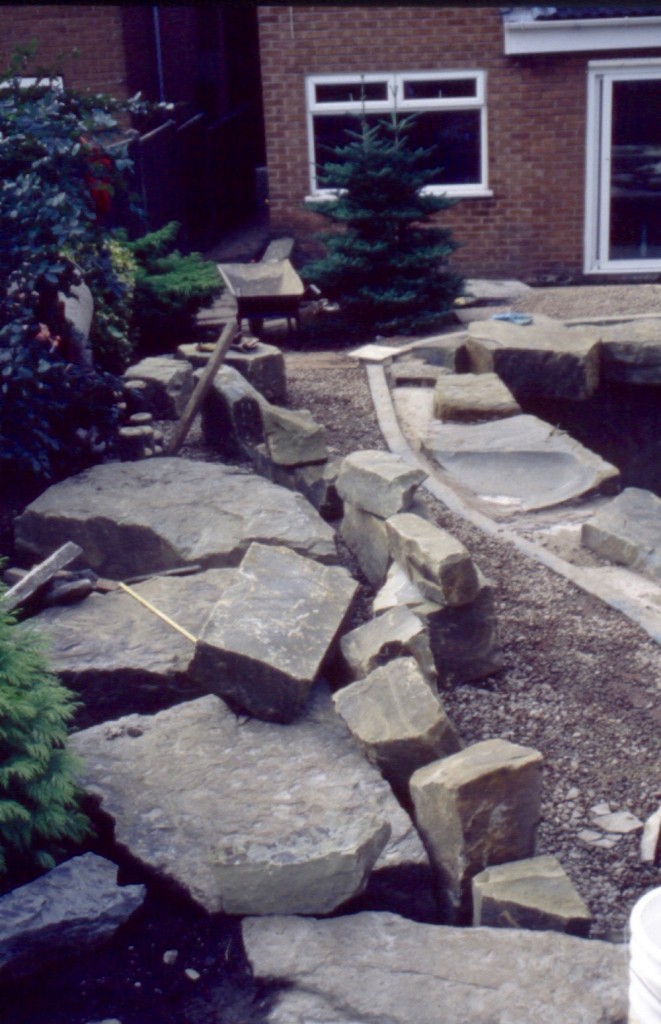

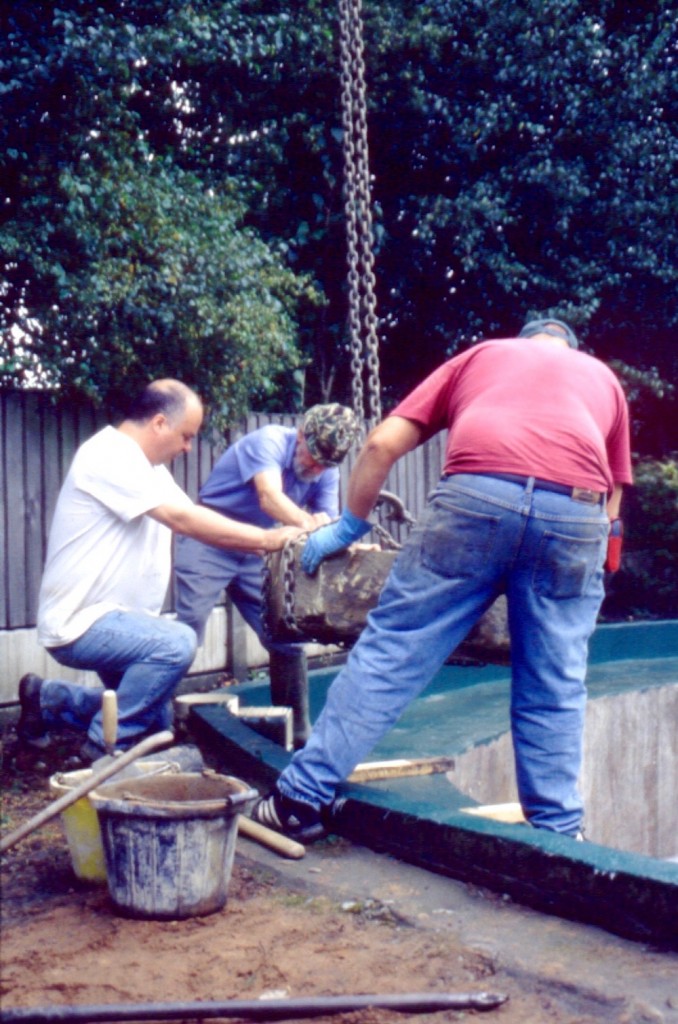
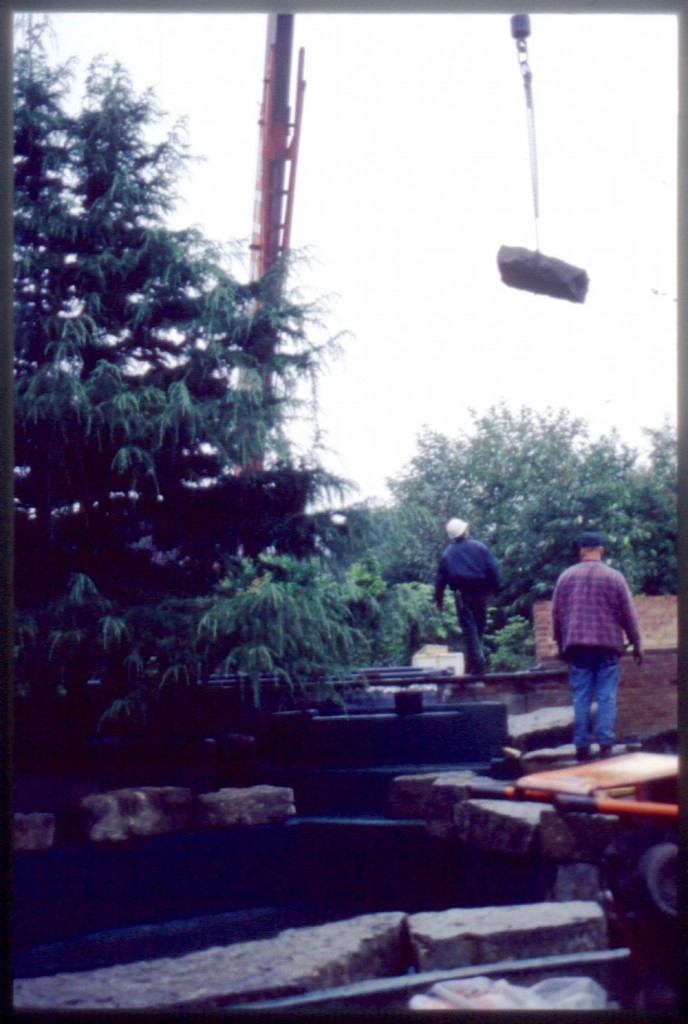
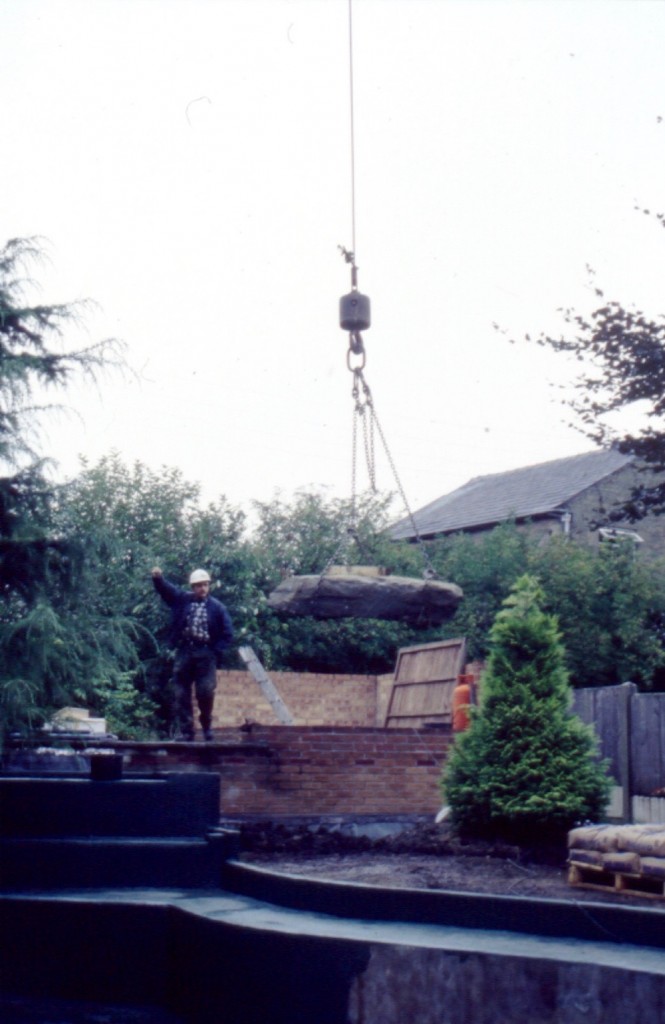
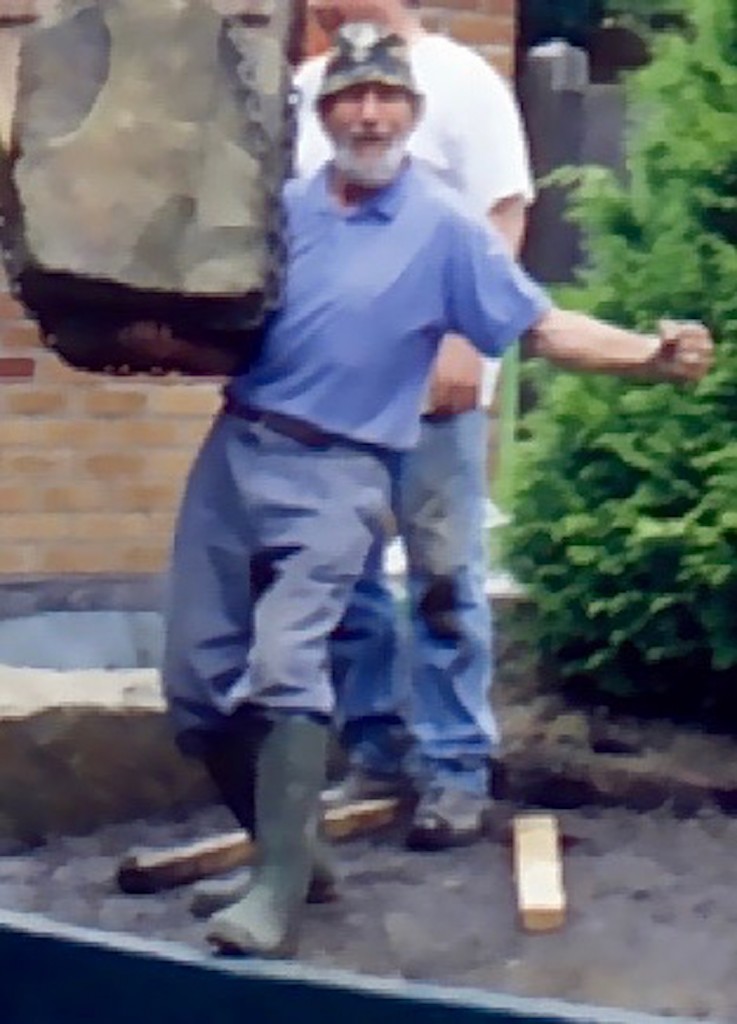
There was a support ledge all around the pond perimeter where the boulders were bedded on mortar and you’ll notice a small wall behind the ledge to ensure no pond water can escape. To give the impression of a total rock pool, the boulders are submerged to a depth of 9” below pond water level.
More soon………. Waddy 17/01/16.
